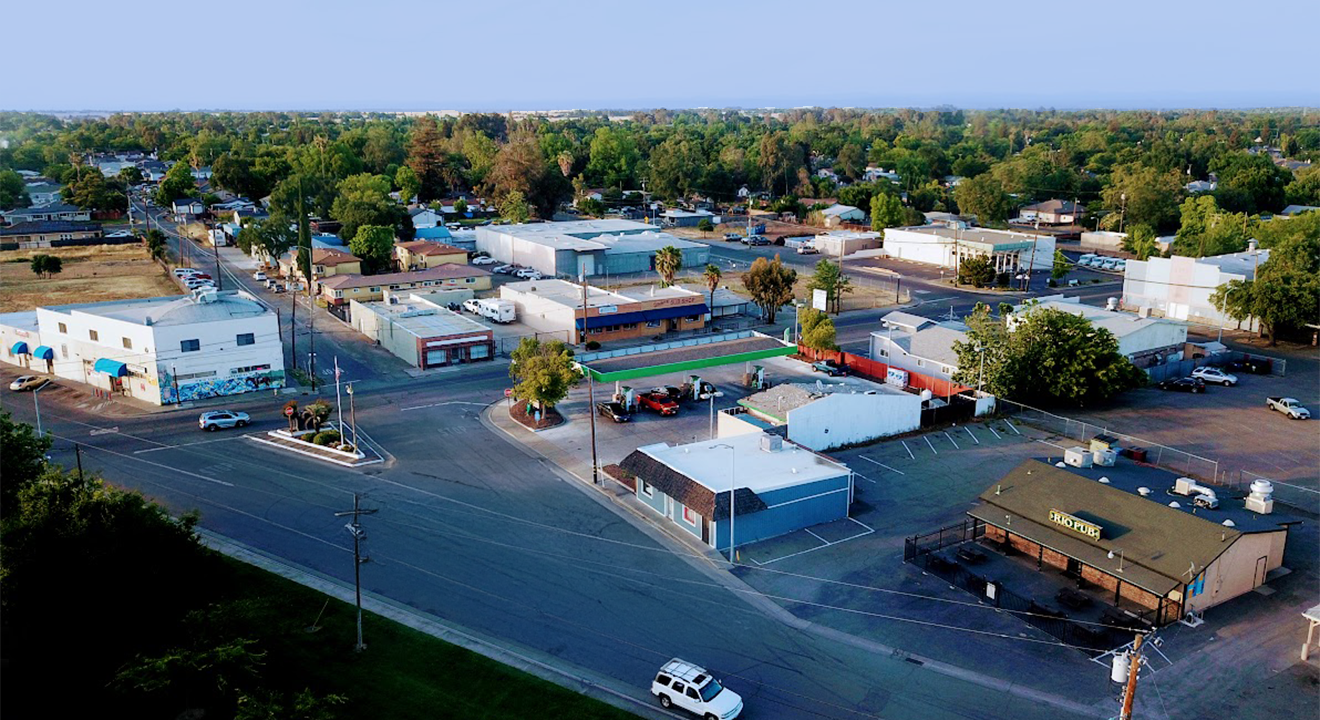For decades, the semi-rural community of Rio Linda, California, located just north of Sacramento, has grappled with a pervasive sense of neglect and perceived discrimination from Sacramento County and its various departments and political leadership. While the term “discrimination” can encompass various forms, the concerns raised by Rio Linda residents often center on a disparity in resources, services, and political influence compared to more affluent or centrally located areas of Sacramento County. This long-standing issue has impacted everything from infrastructure and public services to community development and self-determination.
The Roots of Disparity: How Long Has This Been Happening?
The seeds of Rio Linda’s challenges can be traced back many years, arguably stemming from its unincorporated status and a historical development pattern that diverged from Sacramento’s more urban core. Unlike incorporated cities with their own municipal governments and independent revenue streams, unincorporated communities like Rio Linda rely heavily on the county for essential services, planning, and funding. This reliance can create a power imbalance, with county priorities often dictated by larger, more politically influential areas.
Evidence of this disparity is not new. Sacramento County Grand Jury reports have, on multiple occasions, highlighted deficiencies in services and management within entities serving Rio Linda. For instance, a 2010 Grand Jury report specifically addressed the “unacceptable condition of the existing water supply system; unreliability and inadequacy of water being provided to users within the District; and the mismanagement by the RLECWD executive staff” for the Rio Linda/Elverta Community Water District. This report detailed chronic deficiencies dating back to at least 2007, indicating a long-standing issue with basic infrastructure.
More recently, in 2018, the City of Sacramento’s “predatory annexation” of a portion of unincorporated land near Rio Linda, known as the “panhandle,” further fueled local frustration. Despite the Rio Linda Elverta Recreation and Parks District (RLERPD) providing efficient and adequate services, SacLAFCO (Sacramento Local Agency Formation Commission), heavily influenced by the City of Sacramento, approved the annexation and removed the area from the RLERPD’s jurisdiction. This decision was seen as a political maneuver that disregarded the established efficiency of a local service provider, demonstrating a bias towards the larger city.
This consistent pattern suggests that the perception of discrimination by Sacramento County has persisted for at least 30 years, if not longer, given the historical context of unincorporated areas often being at a disadvantage in county-wide resource allocation.
The “How” and “Why” of the Discrimination
The alleged discrimination manifests in several key areas:
- Disparities in Services: Beyond infrastructure, residents often report feeling that public services in Rio Linda, such as code enforcement, road maintenance, and even access to cooling/warming centers, are less robust or responsive than in incorporated areas or more central parts of the county. The Rio Linda Elverta Recreation and Park District’s Community Center, for example, is no longer on the approved County list for cooling/warming centers due to being in an active flood zone, highlighting how broader county planning or lack thereof impacts local community resources.
- Political Underrepresentation and Influence: As an unincorporated community, Rio Linda lacks its own city council and direct municipal representation. Its interests are instead represented by a single County Supervisor. This can lead to a dilution of influence, as the Supervisor must balance the needs of a diverse district, and the community’s specific concerns can be overshadowed by those of larger, more vocal, or financially powerful constituencies within the county. The 2018 annexation incident vividly illustrates how county-level bodies like SacLAFCO, potentially influenced by larger cities, can make decisions detrimental to unincorporated communities.
- Funding Disparities: The allocation of county funds can often disproportionately favor areas with greater political pull or perceived economic value. While direct, granular data on funding disparities specifically for Rio Linda versus other Sacramento County areas is complex to isolate, the consistent underdevelopment of infrastructure and services in Rio Linda suggests an imbalance in resource distribution. Reports indicating that residents in Antelope and Rio Linda in Sacramento County have a significantly lower life expectancy than those in more affluent areas like Rocklin or Lincoln (7.5 years on average) can be seen as an indirect indicator of systemic disparities that often link to underinvestment in public health and community resources.
- Infrastructure Neglect: Rio Linda has historically struggled with inadequate infrastructure, particularly regarding water and drainage. The aforementioned Grand Jury reports on the Rio Linda/Elverta Community Water District underscore this, detailing issues with water supply, pressure, and an aging system that poses public health risks and fire safety concerns. While some efforts may have been made, the persistent nature of these problems suggests a lack of sustained county investment and oversight compared to other areas.
- “Predatory Annexation” and Loss of Local Control: The attempt by the City of Sacramento to annex parts of Rio Linda, particularly the “panhandle,” highlights a significant power dynamic. Such annexations, labeled “predatory” by some, strip unincorporated communities of their existing service providers and revenue bases without necessarily guaranteeing better service delivery or respecting local autonomy. This directly impacts the community’s ability to govern itself and retain local control over its development and resources.
- Impact of County Policies: While the county has enacted policies like rezoning initiatives to address housing shortages (including in Rio Linda), these top-down approaches can sometimes fail to fully consider the unique character and existing infrastructure of unincorporated communities. While aiming for increased housing density, such policies can also raise community concerns about increased strain on already limited local infrastructure and changes to the rural character that residents value.
The Consequences for Rio Linda Residents
The cumulative effect of these factors has been a persistent feeling among Rio Linda residents that their community is an afterthought, an area to be managed rather than genuinely supported and invested in. This can lead to:
- Diminished Quality of Life: Substandard infrastructure, limited services, and a sense of being overlooked contribute to a lower quality of life for residents, impacting their daily experiences and sense of community pride.
- Economic Stagnation: A lack of investment in infrastructure and public amenities can hinder economic development and discourage new businesses, further perpetuating the cycle of underinvestment.
- Erosion of Trust: The continuous struggle for basic services and the perception of being marginalized can erode trust between the community and local government, leading to frustration and a sense of powerlessness.
- Health Disparities: As indicated by the life expectancy data, systemic neglect and disparities in resource allocation can have tangible impacts on the health and well-being of a community’s residents.
The Path Forward
Addressing the deeply rooted issues faced by Rio Linda requires a multi-faceted approach. This includes:
- Increased and Targeted County Investment: Sacramento County must prioritize significant and sustained investment in Rio Linda’s infrastructure, particularly water and drainage systems, to bring them up to modern standards.
- Equitable Service Delivery: A re-evaluation of service delivery to unincorporated areas, ensuring that Rio Linda receives comparable levels of services to incorporated communities, is crucial.
- Enhanced Community Engagement and Representation: While direct incorporation might be one long-term solution, in the interim, the County must foster more meaningful engagement with Rio Linda residents and ensure their voices are genuinely heard and acted upon in decision-making processes. This could involve exploring alternative governance models or strengthening the local advisory bodies.
- Transparency and Accountability: Greater transparency in county budgeting and resource allocation, coupled with robust accountability mechanisms, could help rebuild trust and ensure equitable distribution of funds.
- Respect for Local Autonomy: Sacramento County and related bodies like SacLAFCO should prioritize the self-determination of unincorporated communities and avoid actions that undermine their existing local service providers or character without clear community consensus.
The story of Rio Linda serves as a powerful reminder that while “discrimination” can take many forms, the systemic neglect and unequal distribution of resources to an unincorporated community by a larger county government can have profound and lasting impacts on the lives of its residents. For Rio Linda, the fight for equitable treatment and recognition is a long-standing one, and its resolution will require genuine commitment and a fundamental shift in how Sacramento County views and supports all its communities, regardless of their incorporated status.


















